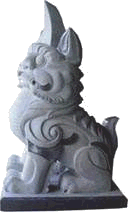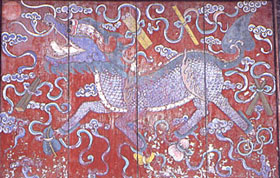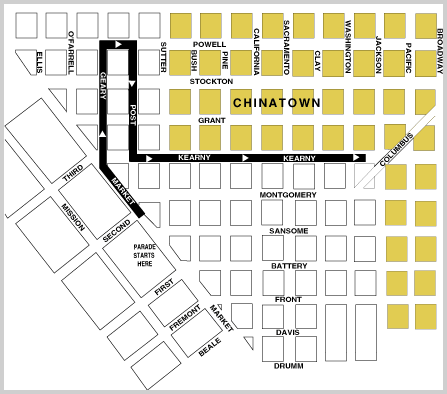Justice Animal – Xiezhi
29 01 2008Xiezhi (獬豸pinyin:)
[audio:xie4.mp3,zhi4.mp3]
A fabulous beast called [tag]Xiezhi [/tag]([tag]獬豸[/tag] pinyin:), by the Chinese, is described as being somewhat like a unicorn and a dragon, although with a singular horn and cleft-foot like a goat, which has the ability to discriminate between right and wrong and destroys the wicked by biting or goring them. It is believed to live in the wilds and is said to be fire-eating even to its own destruction. Since it also looks like a goat, it is also called [tag]Shenyang[/tag] (神羊 pinyin:).
This fabulous creature stood for justice and in the work on legal cases of the Tang (唐 pinyin:) dynasty, entitled, T’ang-yin pi-shih, it is recorded and described as a [tag]single-horned goat[/tag], that appears whenever there was a wrongly accused person who had been misjudged by the judicial system. In a much earlier work, by Wangchong (王充 pinyin:), entitled Lunheng (論衡 pinyin:), it is described also a a goat with a single horn, who is able to judge as to the innocent and guilty, and bites and gores the guilty.  During both the Ming (明 pinyin:) and Qing (清pinyin:) dynasties, it was used as an insignia for civil officials, and a badge of Didu (提督 pinyin:) or circuit intendant.
During both the Ming (明 pinyin:) and Qing (清pinyin:) dynasties, it was used as an insignia for civil officials, and a badge of Didu (提督 pinyin:) or circuit intendant.
In addition it was the [tag]emblem[/tag] for governmental censors. The Xiezhi was the symbol of an upright and honest person, as well as a protector of the court in determining justice. It is a most [tag]auspicious symbol [/tag]that has been both carved, sculpt and painted to decorate halls and courtrooms. This animal is revered and most endeared that there is a dance created, which is similar to the lion dance performed mostly in the South and called in Cantonese as Hai-zai.
This [tag]justice animal[/tag], is also used as a [tag]roof ornament[/tag] and placed ont he ridge of the eaves, usually behind the Suanni (狻猊 pinyin:) and before the Douniu (鬥牛 pinyin:) pottery roof figures.
-By William C. Hu and David Lei
Ponddy Reader Lessons:
HSK Level 1: 早上好 – Good Morning
HSK Level 3: 接机 – Picking up someone at the airport
HSK Level 4: 动物园一日游 – A day in the Zoo
Comments : No Comments » Categories : Mythical Creatures


 The beast is usually depicted with his fore feet placed guardedly on eight different precious objects [tag]babao[/tag] (八宝 pinyin:
The beast is usually depicted with his fore feet placed guardedly on eight different precious objects [tag]babao[/tag] (八宝 pinyin: